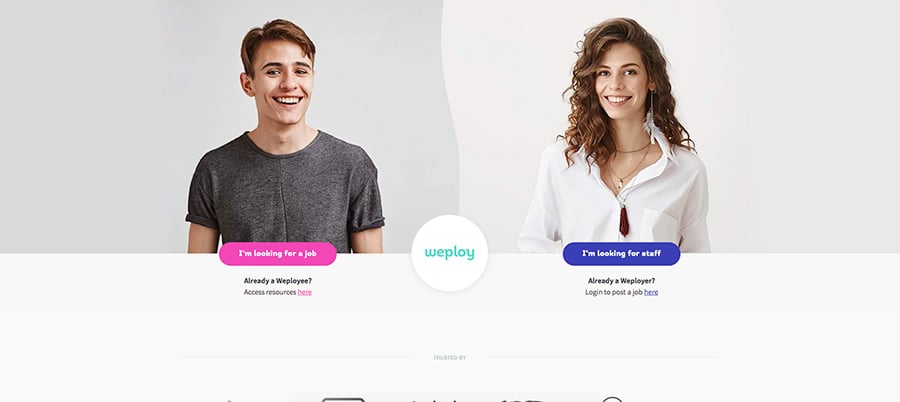It’s the end of the month already, looks like it’s time to wrap up our latest campaign. Everything has been improving steadily over the last few months, I imagine it will be more of the same.
Right, better run through some results from the website. Open up Hubspot, Google Analytics, Moz, the works. Smiles ahead. Ok, the PPC campaign is doing well, that’s a good start but I expected as much considering how much I’m paying for this. Organic search results are down. Uh oh, that’s not what we want to hear. Maybe we’re seeing higher results for...no, down as well. Oh boy, what do I do now?
The older I grow, the more often I think of this Jean-Luc Picard quote:
"It is possible to commit no mistakes and still lose. That is not a weakness, that is life"
Now I’m no Star Trek fan. In fact, I don’t think I’ve even watched more than a minute of any incarnation. For a while I thought this was my own little pearl of wisdom until I Googled it to double check before I went ahead and published an inspirational best seller. Lo and behold, Picard and his creators beat me to it. Regardless, this quote has rung true so many times in my life, both personally and professionally.
One of the most basic models in marketing is a SWOT analysis. We are always looking for weaknesses. It’s not just marketing, it’s life. In sport, we try and figure out how we can exploit the other team’s weaknesses. In school, we hide from our weaknesses by choosing subjects that play to our strengths. In love, we [theoretically] search for somebody who complements us enough to form one perfect, mistake-free super human.
It’s so simple, but what a SWOT analysis has done for me is help allow me to see those weaknesses, and then find a way to translate those over to the opportunities section.
Back to those worrying campaign results. Whether you’re working in-house or for an inbound marketing agency, you will find yourself in this situation more than once. So how can we use them to our advantage and create some opportunities?
Identify the problem
The sooner you can explain what caused the disappointing results, the quicker you’ll be able to be able to move on. Just like Picard says, maybe you’ve done everything right. Maybe your strategy was spot on and 9.9 times out of 10 you would’ve smashed it out of the park. Of course it’s frustrating after all the effort you time you’ve invested into getting this right, but the campaign is over and you can’t results from the past. You can however, gather as much information as you can from these results and learn from them and adapt.
This is when reporting really comes into play. Review the campaign. Go through it as if you were the customer. Get a colleague to do the same. Two brains are [usually] better than one. Open up those Google Analytics reports, Hubspot, Moz, whatever your arsenal of reporting weapons includes. Collate all your data and highlight all the areas that failed to live up to the benchmarks. Now it’s time to rip those results apart.
The Quick Wins
In some cases, issues will jump out of the screen and slap you in the face. Other times, you’re going to have to spend some time to chase those stealthy issues until they are trapped in a corner. More often than not however, there will be some obvious things you can do to turn those results upside down sooner rather than later. Take stock of your current approach and start by going asking yourself these 4 simple questions:
1. Is my blog content engaging enough?
Go through your blog, audit your content, see what people are responding to, if anything. Be your worst critic. I don’t care if you’re Arianna Huffington, your blog is not perfect.
I still hear so many people asking why their business even needs a blog, but I’m not here this time round to sell you on that, but in my opinion, it’s a no-brainer. The question now is not so much if you need one, but rather how should you be using it? Its hard to set a benchmark for engagement on blogs because it really depends on your industry. You should however be seeing constant growth in visitors, and ideally you’d be seeing a high number of returning visitors. If you’re not, it’s time to optimise your approach. Here are some ways you can start:
- Keep your content fresh and consistent, appealing to the people you want to see visiting your site.
- Take some time to explore some great tools such as Buzzsumo.
- Design or revisit your distribution and amplification strategies. If you’re not getting any traction, find new channels to get your content out into the world.
2. When did I last update my SEO strategy?
If it feels like Google changes their algorithm more than you blink in a day, you might need to blink more. But seriously, if you haven’t amended your strategy in a couple of months, now is as good as time as any. Start with the basics, the best practices, and work your way up from there. Use tools such as Google’s Keyword Planner, Moz Pro, or even just some manual searches. Identify what people are searching that could be or is already leading them to you or your competition and see if there’s room for you to move up or start appearing on those pages.
3. Am I doing enough on social media?
Using social media is not just about having the profiles set up, regurgitating content, and trying to trick people into clicking through to your website. Your social media pages are limbs of your brand’s body. If your campaign brain wants to do one thing and your social media limbs aren’t receiving the signal, you will fall over.
How much are you investing in amplifying your content on your social channels? Maybe you have some wiggle room with your budget and using it on your social media channels could be exactly what you need to really drive home those results. If you aren’t doing as much as you can with your social media pages, you’re wasting countless opportunities.
4. What are my goals?
A simple one but important nonetheless. Make sure you have clearly defined what your goals are, and go back to marketing 101 and evaluate whether these goals are Smart, Measurable, Achievable, Realistic, and Timely (SMART). Once you’ve got these, make sure they are being tracked through Google Analytics and Hubspot. The more data you can get hold of and dissect, the quicker you will start winning.
Next time you get that sinking feeling while reviewing your campaign just stop, identify the problem, and find those quick wins. Next time round, you’ll nail it. If Jean-Luc Picard worked at You & Co, he most certainly would say that disappointing results are not a weakness, they are an opportunity to improve. Let’s take those opportunities.



